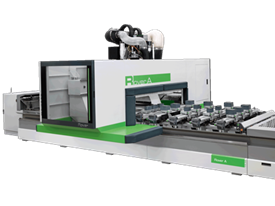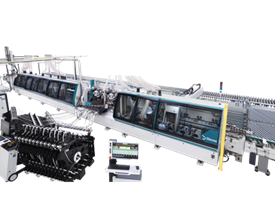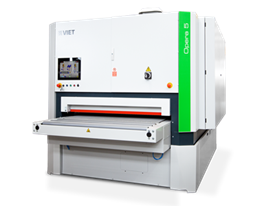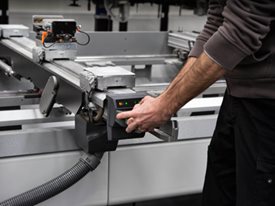CAD software is an essential tool in the manufacturing industry, providing the ability to design and model parts and products digitally. When it comes to medium and large-scale production, selecting the right CAD software is crucial for optimising the efficiency and accuracy of the design process.
In this blog, we will share insights about the key specifications to consider when choosing CAD software for medium and large-scale production, including features such as 3D modelling capabilities, file compatibility, and ease of use. But first, let's start by answering the question: what is CAD software, and how does it work?
er programs that can detect and correct errors in real-time, ensuring that the final product meets the required specifications. This blog explores what is quality in manufacturing CNC products and its role with automation in transforming the industry. We will also discuss some of the challenges that manufacturers face when implementing automation in their manufacturing processes.
What is CAD Software? 6 Factors to Consider Before Investing
CAD software is an essential tool in the manufacturing industry, providing the ability to design & model 2D, 3D parts and products digitally. It is an essential tool in the manufacturing industry, and choosing the right CAD software for CNC machines is crucial for optimising the design process. There are several key specifications to consider in order to find the best fit for your needs. Here are six key considerations to keep in mind:
- 3D Modelling Capabilities
Depending on your design needs, you may require a CAD software that offers advanced 3D modelling capabilities such as surface modelling, solid modelling, and parametric modelling. Consider the level of detail and complexity you need to achieve in your designs, and look for a software that meets those requirements.
- File Compatibility
It's important to choose a CAD software that can import and export a range of file types, including common design file formats such as STL, IGES, and STEP. This will allow you to exchange designs with other team members and clients, and ensure that your designs can be used with a variety of different software and machinery.
- Ease of Use
CAD software can be complex, so it's important to choose a software that is user-friendly and easy to learn. Look for a software that offers a clear and intuitive interface, as well as helpful documentation and tutorials to help you get up to speed.
- Collaboration Features
If you work with a team of designers, you'll want to choose a CAD software that offers collaboration features such as real-time editing and version control. This will help to streamline the design process and reduce the risk of errors.
- Price and Licensing Options
When choosing CAD software, it's important to consider the CNC machine price and licensing options. While some software is available on a subscription basis, others must be purchased outright. Keep your budget and the long-term needs of your business in mind when making a decision. CAD software can be expensive, so it's important to carefully consider the costs and benefits before committing to a particular software.
- Technical Support and Training Resources
Good technical support and training resources are essential for getting the most out of your CAD software. Look for a software that offers a range of support options, including online documentation, forums, and phone or email support. Training resources such as webinars and in-person classes can also be helpful for learning the software and staying up to date with new features.
Understanding the Different Types of CAD Softwares
CAD software is a computer-aided design tool that allows users to create and modify digital 2D and 3D models of parts and products. There are several different types of CAD software available, each with their own specific features and capabilities. Here is an overview of some of the main types of CAD software and what they are used for:
- 2D CAD Software: 2D CAD software is used to create and edit two-dimensional drawings and designs. It is typically used for creating technical drawings, floor plans, and schematics.
- 3D CAD Software: 3D CAD software is an essential tool for top manufacturing companies in Bangalore as it allows them to create and edit three-dimensional models of their products. This type of software is often used for designing prototypes and developing manufacturing plans.
- 3D Printing Software: 3D printing software is used to prepare 3D models for printing on a 3D printer. It allows users to adjust the print settings and orientation of the model, and generate the necessary instructions for the 3D printer.
- BIM Software: Building Information Modeling (BIM) software is used to create and manage digital representations of buildings and other structures. It allows users to design and analyse the performance of buildings in terms of cost, energy efficiency, and other factors.
- CAE Software: Computer-aided engineering (CAE) software is used to simulate and analyse the performance of mechanical systems and structures. It allows users to test the behaviour of designs under different conditions and identify potential problems before prototypes are built.
- PDM Software: Product Data Management (PDM) software is used to manage and track the data associated with product development and manufacturing. It helps to ensure that all team members have access to the latest versions of designs and documentation, and allows for easy collaboration and communication.
Conclusion
In conclusion, it's important to understand what is CAD software and how it works in order to choose the right one for your business. By considering key specifications such as 3D modelling capabilities, file compatibility, and ease of use, you can find a CAD CAM software for cnc machine that meets your specific business needs. Additionally, features such as collaboration tools, price and licensing options, and technical support and training resources can help to ensure that you get the most out of your CAD software. By taking the time to carefully evaluate your options and choose the right software for your needs, you can improve the efficiency and accuracy of your design process, and ultimately drive the success of your manufacturing operation.



.png)





 Worldwide
Worldwide
 Italia
Italia
 United Kingdom
United Kingdom
 Россия
Россия
 France
France
 中国
中国
 Asia
Asia
 Deutschland
Deutschland
 España
España
 Schweiz
Schweiz
 North America
North America
 India
India
 Australia & New Zealand
Australia & New Zealand
 Türkiye Cumhuriyeti
Türkiye Cumhuriyeti
 Middle East
Middle East
 Brasil
Brasil